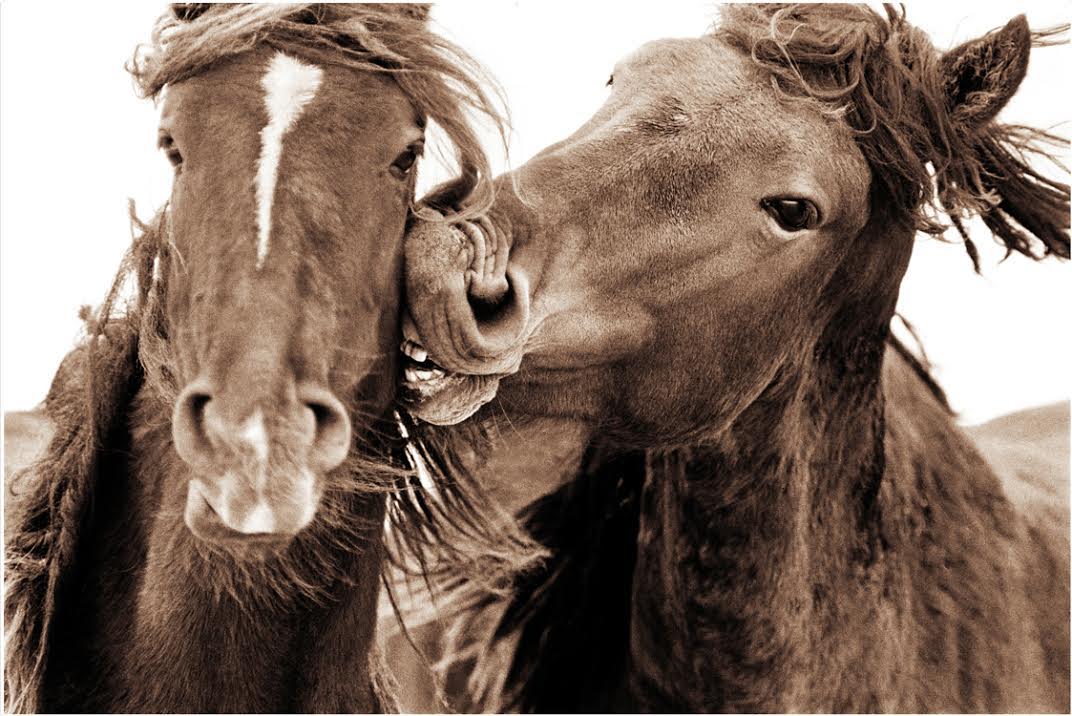Roberto Dutesco has been revealing the beauty of nature and the human spirit through his photography for more than three decades. He first learned of Sable Island and its wild horses in 1994 and made his first trip to the island that same year. A perilous journey by small plane from Halifax and a beach landing brought him to this remarkable place. Over time, and with patience and respect for these living creatures who, in the absence of natural predators, exhibit no fear of humans, he learned the ways of the horses and fell in love with the island in the process.
As Dutesco discovered the island for himself over the course of several visits, he captured the beauty and isolation of the wild horses and their austere habitat through still photography and 16-mm film. His incredible journey is presented in a full-length documentary entitled Chasing Wild Horses, which has aired many times on the CBC (Canadian Broadcasting Corporation) and other media outlets in the U.S. and Europe.
In 2008, the Canadian government identified Sable Island as a protected national treasure under the Canada Shipping Act, Bill #227, as a result of Dutesco’s efforts. He says, “This legislation underscores the point that, if natural locations like this are to endure, they must be left alone. I have spent the last eighteen years dedicated to that belief and will continue to work for their preservation for the future.”
Click here to read more
—Roberto Dutesco, Photographer
A story worth telling – over and over again. . . .
A fragile sliver of sand more than one hundred miles off the coast of Nova Scotia is sending the world a message. This tiny, windswept island sits at the center of what is known as “the Graveyard of the Atlantic,” and, since the seventeenth century, its shoals have been the site of more than 475 shipwrecks. This slender island—Sable Island—42 km in length and just 1.5 km wide, is home to more than four hundred wild horses. Abandoned there by sailors long ago or cast ashore from wrecks on the many sandbars that surround the island, this feral herd has managed to thrive in an austere, unforgiving environment that offers not a single sheltering tree and just sea grass and rainwater ponds for sustenance.
Never permanently settled, Sable Island has, however, seen temporary occupation by shipwrecked sailors, transported convicts, pirates and wreckers. The first recorded shipwreck was of one of Sir Humphrey Gilbert’s ships in 1583. In 1598 the Marquis de La Roche landed forty convict settlers on the island. Only twelve survived, to be rescued in 1603. Manned lighthouses were established in 1873 but have been automated since the 1960s.
Sable Island has been evolving as a barrier island during the past several thousand years of postglacial time as the sea has slowly risen over the Continental Shelf. Southerly storm waves have driven sands from the seabed onto the south shore. Currents related to the Gulf Stream cause a northeast drift of beach material along this shore, slowly extending the island in that direction. Along the northern shore, the Belle Isle current shifts sand more slowly southwestward.
The dune ridges were built by winds behind the northern and southern beaches, but their continuity is broken by linear blowouts formed by intense northwesterly winter storms. A comparison of charts of the island made over the last two hundred years shows that the northern and southern ridges were broken in the 1760s, and that after closure in the early nineteenth century, the central depression was occupied by a lake that has progressively shrunk in size as a result of drifting sand and plant colonization. Lake Wallace, 5.5 km long, is the present shallow remnant of this lake in the western part of the island. Except for in areas of extensive blowout, Marram grass, or low shrub cover, stabilizes the dunes.
Natural fauna include terrestrial insects, freshwater aquatic life in Lake Wallace, birds and seals. Birds are mainly common sea and shore birds such as gulls and sandpipers, but the Ipswich sparrow is unique to the island. Grey and Harbour seals are present in the thousands, the Grey being a permanent resident, the Harbour seal a summer visitor. Numerous SABLE ISLAND HORSES still roam the island.


Recent Comments